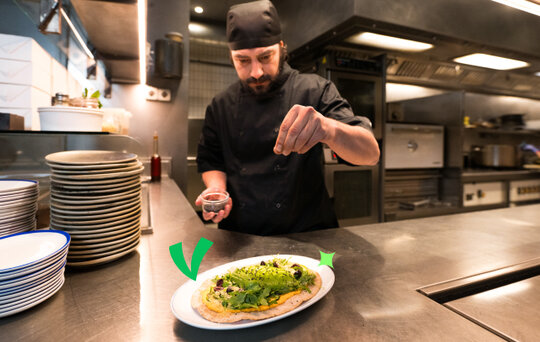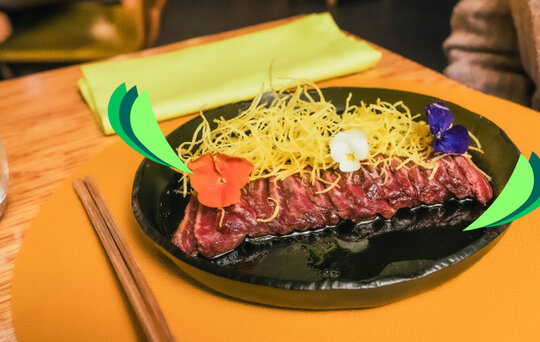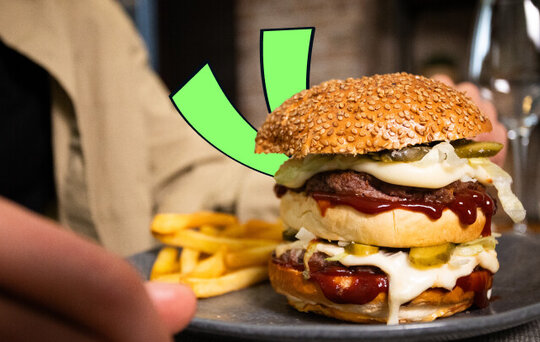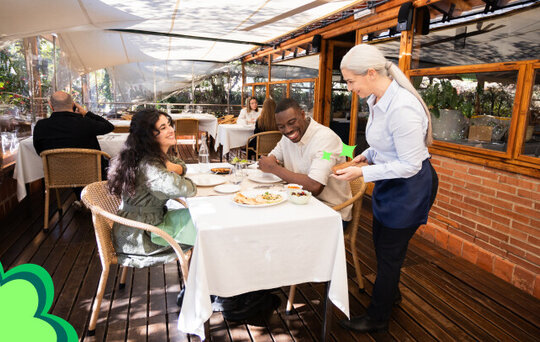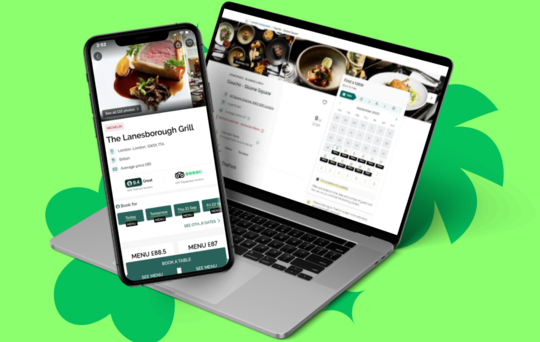How to Choose a Unique and Memorable Restaurant Name
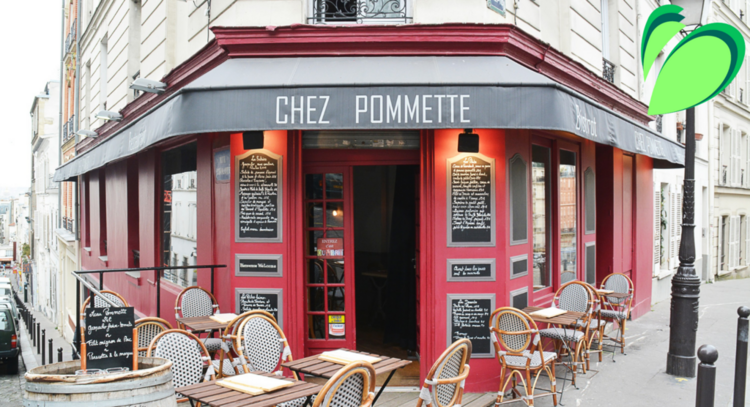
- • How to Choose Your Restaurant Name
- • Tailor your restaurant name to your concept
- • Find the balance between originality and memorability
- • Incorporate your local or cultural heritage
- • Try TheFork for free
- • Conduct Brainstorming Sessions
- • Tell a story
- • Test Pronunciation
- • Listen to customer feedback
- • Check the availability of your restaurant name
- • Integrate your restaurant name into your marketing strategy with TheFork
How to Choose Your Restaurant Name
A good restaurant name should be catchy, tell a story, and stay in people's minds. It’s the first thing customers will see, like the title of a book or film, and choosing the right one is an important process that can’t be rushed. You only get one first impression, and in a competitive environment, maybe only one opportunity to win diners’ hearts. And if this wasn’t enough, you'll be seeing and saying your restaurant’s name almost every day, so you should probably like it too.
To help you with the decision, we’ve put together our tips for finding the perfect name for your restaurant.
Tailor your restaurant name to your concept
Choosing your restaurant's name requires deep reflection on the very essence of your concept. If you have a fine dining restaurant, opt for an elegant and refined name. For a pizzeria, a warm and friendly name might be more appropriate. Also, consider the decor, location, and ambience of your restaurant – all these elements should shine through the name. A well-chosen name acts as a mirror of your identity and attracts customers seeking the specific experience you offer. This is how you create a strong and recognisable brand.
London restaurant chain and TheFork partner Gaucho has never hesitated to embrace and promote its South American heritage. When the first restaurant opened in 1994, founder Zeev Godik wanted to bring the finest Argentinian steak to British diners. The name? Gaucho – the Argentinian word for cowboy.
Find the balance between originality and memorability
The balance between originality and memorability is crucial in choosing a restaurant name. An original name grabs attention and stands out, but if it's too complex or unintuitive, it might be forgotten or mispronounced by your customers. Ideally, a restaurant name should spark curiosity while remaining simple and easy to remember. This could involve clever wordplay, using familiar terms from a new angle, or word combinations that evoke strong imagery and positive feelings, ensuring that the name stays rooted in customers' minds.
Incorporate your local or cultural heritage
Considering your local or cultural heritage in your restaurant's name can significantly enrich its identity. This might involve using terms or references specific to a region, culinary tradition, or cultural heritage. A name that celebrates local or cultural heritage also shows respect and pride for roots and traditions, serving as a powerful draw for customers seeking a unique and authentic experience.
Try TheFork for free
Conduct Brainstorming Sessions
Organising brainstorming sessions is an effective method for finding name ideas for your restaurant. Invite your team, friends, or family members to participate. The goal is to foster an open environment where everyone can freely share their ideas. Encourage participants to think creatively and explore all possibilities to find names, whether they're traditional or unusual. You can use whiteboards, paper, or digital applications to note all suggestions. A name created collaboratively by your team can foster a strong sense of community and boost staff morale.
Tell a story
Connecting your restaurant’s name with a story is a powerful way to bring a name to life. A name that tells a story drives curiosity and emotion, creating a deeper connection with your customers or even acknowledging the history of the restaurant. In 2008, Giuseppe Mascoli took over his friend Franco’s pizzeria in Brixton Market. Since then, the restaurant has grown into a franchise spanning dozen of UK cities and even a handful in Spain and Italy, now known by its more recognisable name, Franco Manca – Italian for “Franco is missing”.
If your restaurant has a long family history, a name that reflects this heritage can attract customers interested in an authentic experience rich in traditions. Similarly, if your concept is inspired by a certain type of cuisine or a specific place, choosing a unique name that tells that story can enrich the culinary experience and create a lasting impression on your customers.
Test Pronunciation
Testing the pronunciation of your company's name ensures it’s accessible and easy to recall. A restaurant name that's difficult to pronounce can become a barrier to communication, especially when it comes to recommending your establishment or searching for it. To evaluate this, ask different people to read the name aloud and observe any difficulties they may encounter. This is particularly important in a multicultural or tourist context where the name should be easy to pronounce for a diverse audience. An easily pronounceable name promotes word-of-mouth and enhances the visibility of your restaurant.
Listen to customer feedback
Collecting feedback from potential and/or current customers is an essential step in finalising your restaurant's name. After selecting a few options for original names, share them with your friends, regular customers, or online community. Observe their reactions and listen attentively to their comments. Public feedback can also help you understand how the name resonates with the values and expectations of your target audience, helping you settle on the best option with confidence.
Check the availability of your restaurant name
To ensure the uniqueness and legality of your company's name, thorough research is necessary. Start with an internet check to see if other establishments are already using that name. This step is crucial to avoid confusion among customers and trademark issues. Then, consult intellectual property databases to check if the name is already registered or trademarked.
Also, don't forget to check the availability of the corresponding domain name for your website, as this plays an important role in your online presence and marketing efforts. A distinctive and legally available name is fundamental for establishing a strong brand and avoiding potential legal disputes.
Integrate your restaurant name into your marketing strategy with TheFork
Integrating your restaurant's name into your marketing strategy is essential to strengthen your company's presence in the market. With TheFork Manager, you can highlight your identity through:
- The restaurant profile on TheFork: Create a complete profile that highlights the name and concept of your restaurant, using attractive tags and photos. This helps grab the attention of potential customers and creates a strong brand image.
- Email campaigns are an effective way to communicate directly with your customers by highlighting the name of your restaurant and its special offers. This strengthens brand recognition and customer loyalty.
Decided on a name? Get in touch with our experts to find out more about what TheFork and TheFork Manager has to offer your restaurant.
- How to Choose Your Restaurant Name
- Tailor your restaurant name to your concept
- Find the balance between originality and memorability
- Incorporate your local or cultural heritage
- Try TheFork for free
- Conduct Brainstorming Sessions
- Tell a story
- Test Pronunciation
- Listen to customer feedback
- Check the availability of your restaurant name
- Integrate your restaurant name into your marketing strategy with TheFork





